
The Cathedral Church of All Saints, Derby, better known as Derby Cathedral, is a cathedral church in the city of Derby, England. In 1927, it was promoted from parish church status to that of a cathedral, creating a seat for the Bishop of Derby, which new see was created in that year. The original church of All Saints was founded in the mid-10th century as a royal collegiate church, dedicated to All Saints. The main body of the church as it stands today is a Georgian rebuilding by James Gibbs, completed in 1725. The tower dates from the 16th century, and a retroquire was added in the 20th century.
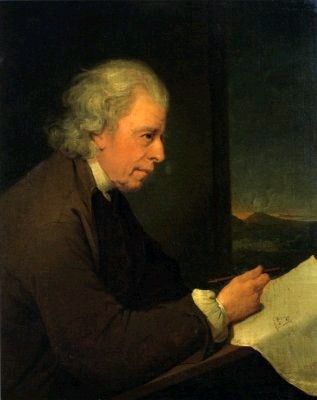
John Whitehurst FRS, born in Cheshire, England, was a clockmaker and scientist, and made significant early contributions to geology. He was an influential member of the Lunar Society.

The Clockmakers’ Museum in London, England, is believed to be the oldest collection specifically of clocks and watches in the world. The collection belongs to and is administered by the Clockmakers’ Charity, affiliated to the Worshipful Company of Clockmakers, founded in 1631 by Royal Charter. Since 2015 it has been housed in a gallery provided by the Science Museum in South Kensington, having formerly been located in the Guildhall complex in the City of London since 1874, where it first opened to the public. Admission is free.

Derbion is a large indoor shopping centre in Derby, England. It is the largest shopping centre in the East Midlands and the 15th largest in the United Kingdom.

Portsmouth Guildhall is a multi-use building in the centre of Portsmouth, Hampshire, England. It is located in a pedestrian square close to Portsmouth and Southsea railway station. Constructed in 1890, the building was known as Portsmouth Town Hall until 1926. It was heavily damaged by bombing during the Second World War and largely rebuilt during the 1950s by the English architect Ernest Berry Webber. It now operates as a concert, wedding and conference venue. It is a Grade II listed building.

Hall for Cornwall, known as Truro City Hall until 1997, is an events venue in Boscawen Street in Truro, Cornwall, England. The building, which was previously the headquarters of Truro City Council, is a Grade II* listed building.

Alice Ann Wheeldon was a British supporter of universal and women's suffrage and anti-war campaigner. She was convicted in 1917, along with her daughter, Winnie, and son-in-law, Alfred Mason, of conspiracy to murder the Prime Minister, David Lloyd George. Some of the evidence given in the case against them appears to have been fabricated on behalf of "a government eager to disgrace the anti-war movement".

The Derbyshire Royal Infirmary was a hospital in Derby that was managed by the Derby Teaching Hospitals NHS Foundation Trust. Following the transfer of community services to the London Road Community Hospital located further south-east along London Road, the infirmary closed in 2009 and most of the buildings were demolished in spring 2015.
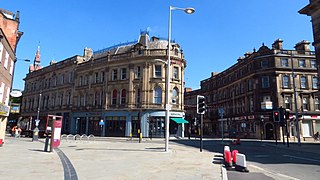
Derby is a city and unitary authority area on the River Derwent in Derbyshire, England. Derbyshire is named after Derby, which was its original county town. As a unitary authority, Derby is administratively independent from Derbyshire County Council. The population of Derby is 261,136 (2021).
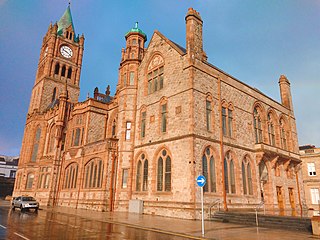
The Guildhall in Derry, Northern Ireland, is a guildhall in which the elected members of Derry City and Strabane District Council meet. It is a Grade A listed building.

Southampton Guildhall (branded the O2 Guildhall Southampton) is a multipurpose venue which forms the East Wing of the Civic Centre in Southampton, England. There are three venues in the Guildhall catering for various event formats: the Guildhall itself, the Solent Suite and a lecture theatre.
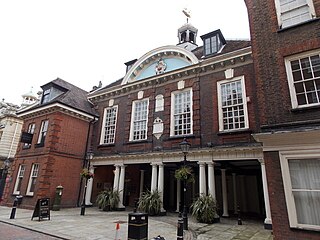
The Rochester Guildhall is an historic building located in the High Street in Rochester, Kent, England. It is a Grade I listed building.
Smith of Derby Group is a clockmaker based in Derby, England founded in 1856. Smith of Derby has been operated continuously under five generations of the Smith family.

The Council House is a municipal building in Corporation Street, Derby, England. It is the headquarters of Derby City Council and it is a locally listed building.

Wakefield Town Hall is a municipal building in Wood Street in Wakefield, West Yorkshire, England. It remains a venue for weddings and civil partnerships but is no longer the headquarters of Wakefield Council which is now based at County Hall. The town hall is a Grade I listed building.

Preston Town Hall is a municipal building in Lancaster Road in Preston, Lancashire, England. The town hall, which is the headquarters of Preston City Council, is a Grade II listed building.

Launceston Guildhall and Town Hall is a municipal building in Western Road in Launceston, Cornwall, England. The building, which was the meeting place of Launceston Town Council, is a Grade II listed building.
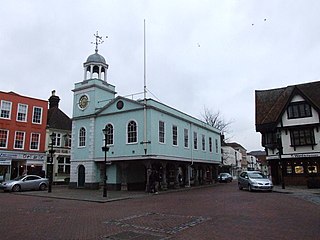
Faversham Guildhall is a municipal building in the Market Place in Faversham, Kent, England. The structure, which was the meeting place of Faversham Borough Council, is a Grade II* listed building.

Long Eaton Town Hall is a municipal building in Derby Road, Long Eaton, Derbyshire, England. The town hall, which currently serves as one of two meeting places of Erewash Borough Council, is a Grade II* listed building.

Swadlincote Town Hall is a municipal building in The Delph in Swadlincote, a town in Derbyshire in England. The building, which serves a community events venue, is a Grade II listed building.




















